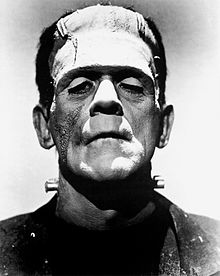What is Paging Service?
 The 21st century would take people to a world of mechanical solidarity with courtesy from services like paging service, cellular telephone and Internet etc. Having acquainted ourselves with services like cellular telephone and Internet earlier, now let us discuss what paging service is all about.
The 21st century would take people to a world of mechanical solidarity with courtesy from services like paging service, cellular telephone and Internet etc. Having acquainted ourselves with services like cellular telephone and Internet earlier, now let us discuss what paging service is all about.Paging is a one-way wireless communication providing instant access to the person being paged. One-way communication means that the subscriber only receives the message and can not communicate back instantly. The subscribers receive messages from anyone with access to a telephone. The modus operandi is as follow: The paging network of a particular region is co-ordinated by a ‘pagers exchange’ or network operator. Subscribers have a paging number assigned exclusively to them by the concerned network operator. The person who wants to send a message to a subscriber rings up the operator and leaves the message with him along with the subscriber’s paging number. Then the operator relays the message to the subscriber either directly or through any other regional operator. The message is then received by a small palm-size device called ‘pager’ kept by the subscriber with himself. An alarm sound from the device alerts the subscriber who then reads the message, flashed on the screen of the device. Some pagers also vibrate to alert the subscriber of an incoming message. The main advantage which a pager provides is that the subscriber receives the message wherever he may be since he carries the wireless device (pager) always with him.
In India, as of now, the government has issued licenses to private operators to provide paging service to interested people and the number of subscribers is growing fast. As per current estimates, the running cost of a pager for monthly service would be around a couple of hundred rupees and a pager, at the moment, costs about a few thousand rupees. It is now the cheapest and most reliable one-way communication system available in the market today. Although its primary use is to get a message across fast, it has other potential uses such as getting across share market information by the business circles or to have latest cricket scores, for instance. The only demerit is that it provides only one-way communication as the receiver can not communicate back to the caller.
 Electronic mail is a modern method of instant delivery of letters without the involvement of a postman. In this system of mailing, messages are sent with the help of a computer.
Electronic mail is a modern method of instant delivery of letters without the involvement of a postman. In this system of mailing, messages are sent with the help of a computer.

 The ‘sundew plants’ have hair on their leaves. The tips of these hairs have droplets of a liquid which appear very attractive. As soon as some insect is attracted towards a leaf, these hairs bend forward, capture the insect and digest it with the help of their own juice. The digested flesh is absorbed through their leaves. After that the hairs again become normal.
The ‘sundew plants’ have hair on their leaves. The tips of these hairs have droplets of a liquid which appear very attractive. As soon as some insect is attracted towards a leaf, these hairs bend forward, capture the insect and digest it with the help of their own juice. The digested flesh is absorbed through their leaves. After that the hairs again become normal.
 An obvious answer to this question is, “We cannot fly like birds because we do not have natural wings”. However, this answer does not explain this question fully because even if we attach artificial wings to our arms we cannot fly. Then how do the birds fly?
An obvious answer to this question is, “We cannot fly like birds because we do not have natural wings”. However, this answer does not explain this question fully because even if we attach artificial wings to our arms we cannot fly. Then how do the birds fly?
 Dragon is a legendary dreadful monster that never existed in reality. It is a mythical figure born out of people’s imagination long time ago. The belief in this creature apparently arose without the slightest knowledge on the part of the ancients about the gigantic, prehistoric dragon like reptiles.
Dragon is a legendary dreadful monster that never existed in reality. It is a mythical figure born out of people’s imagination long time ago. The belief in this creature apparently arose without the slightest knowledge on the part of the ancients about the gigantic, prehistoric dragon like reptiles. Money has always fascinated mankind from the time of Aristotle to the present day. Aristotle observed that man is a social being and establishes certain norms and regulations for their social interaction. Men employed money as a mode of exchange to facilitate such social dealings from their economical aspect.
Money has always fascinated mankind from the time of Aristotle to the present day. Aristotle observed that man is a social being and establishes certain norms and regulations for their social interaction. Men employed money as a mode of exchange to facilitate such social dealings from their economical aspect.